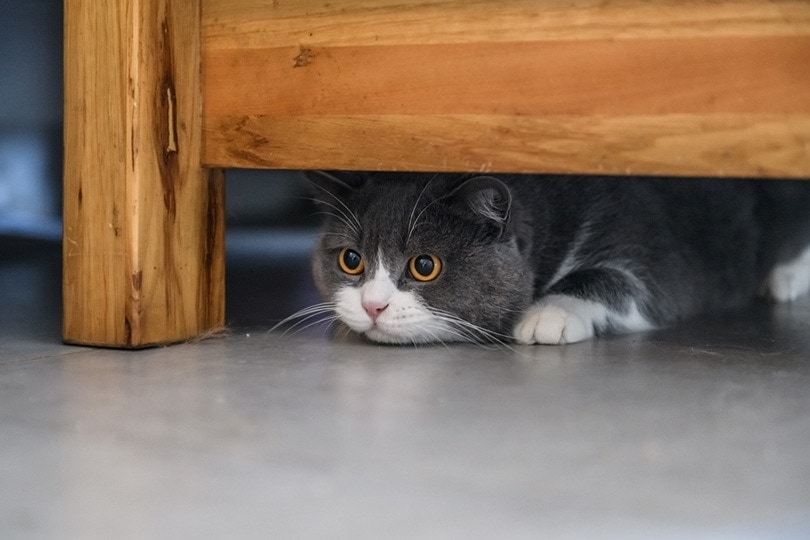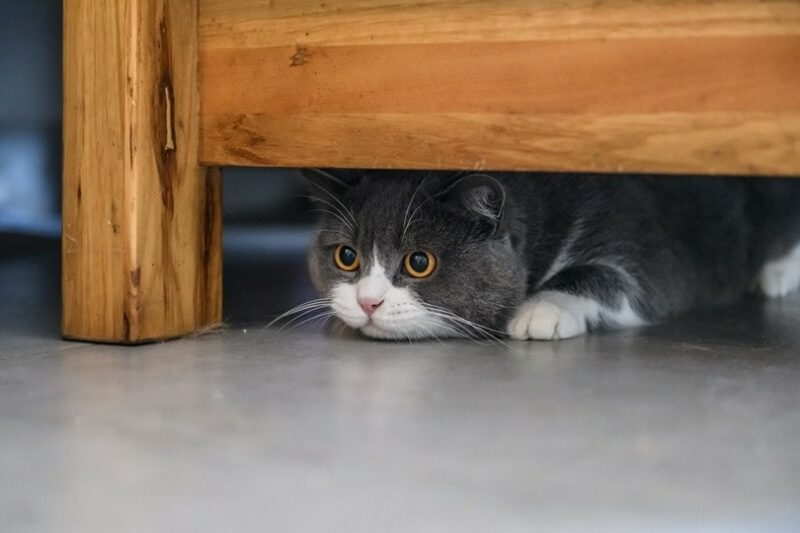Cats can be sneaky. Without realizing it, your cat can slip away and find a place to hide. Under normal circumstances, it isn’t a cause for concern. Hiding can be a normal cat behavior, as it helps them to decompress. The concerning part is when your cat starts hiding in dangerous places.
There are several places indoors where your cat can get stuck. In this article, we will discuss some of the most common places a cat can become trapped, ranging from relatively harmless to extremely worrying. When reading through this list, consider ways to keep your cat from accessing these places so you can ensure their safety.
The 11 Places Where Indoor Cats Can Get Stuck:
1. Closets

A closet is one of the most common places a cat can become trapped. Most homes have closets with doors, and if your cat sneaks into the closet without your knowledge, they can be accidentally shut inside. Typically, it isn’t dangerous for cats. They’ll cry to be let out when they want to be freed.
However, it’s still best to check each closet before you close it to ensure that your cat isn’t inside, especially if you’re leaving the house. You don’t want your cat to be trapped until you come home.
2. Ovens
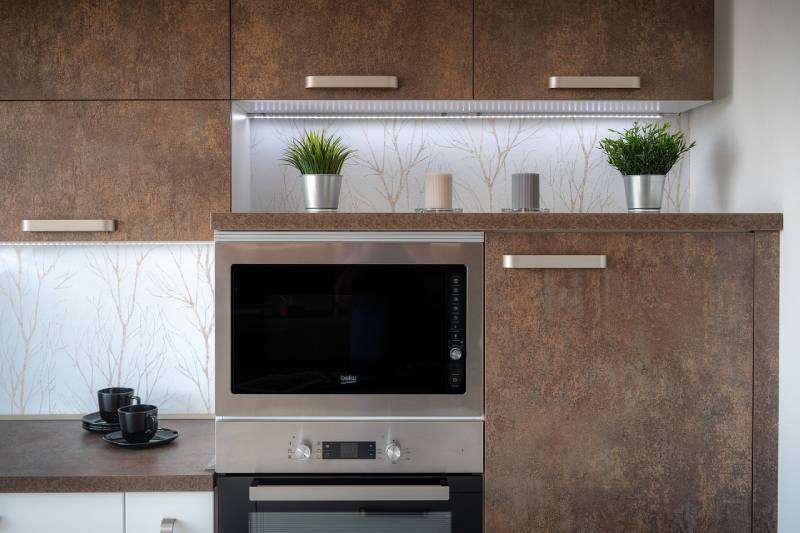
This is among the scarier places a cat can become stuck. If your oven is left open to air out and your cat wanders inside, they can become trapped if the door is shut behind them. Surely, it doesn’t need to be said how dangerous it would be if the oven were turned on with your cat still inside. That’s why you should always check your oven before closing and turning it on.
3. Washing and Drying Machines
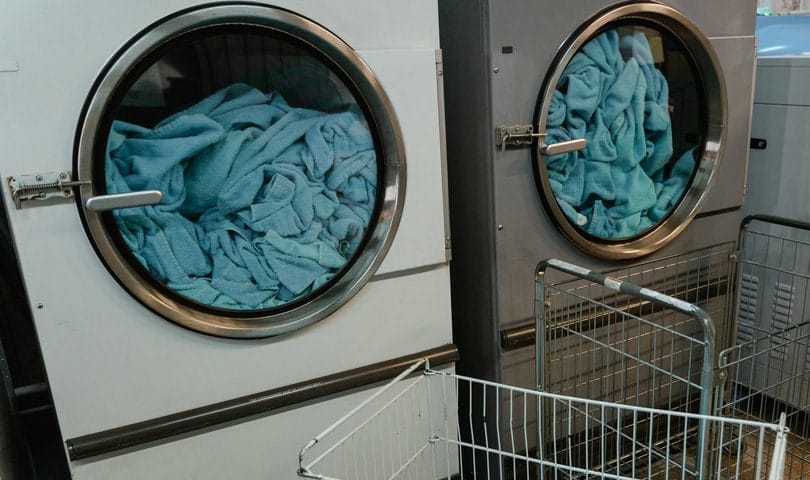
Another hazardous spot where your cat can get stuck is inside the washer or dryer. While both machines are hazardous for cats when turned on, the dryer may be the most worrying. The dryer is often filled with warm, clean, comfy clothes.
It is a perfect environment for your cat to curl up and doze off. If your cat tries it once, they may make a habit of hopping into the dryer whenever possible. Check your laundry machines carefully before starting them to ensure that your cat isn’t dozing off inside.
4. Refrigerators and Freezers
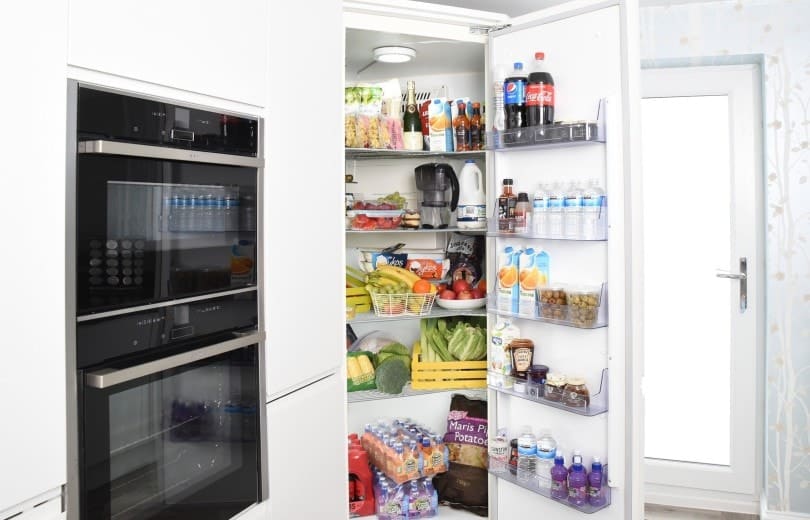
Refrigerators and freezers are possibly the most dangerous objects on this list. It isn’t because cats are especially prone to sitting inside of them, but rather, the trapped cat will immediately experience the negative effects of being inside. Unlike ovens or dryers, which require you to turn them on, refrigerators and freezers always run. A cat trapped inside could immediately begin suffering from the low temperatures.
Thankfully, refrigerators and freezers are rarely left open, and it isn’t likely your cat will wander inside. Still, if you know your cat likes to sneak inside the fridge or freezer whenever you open them, take an extra minute to ensure your cat is outside before closing the door.
5. Suitcases and Bags
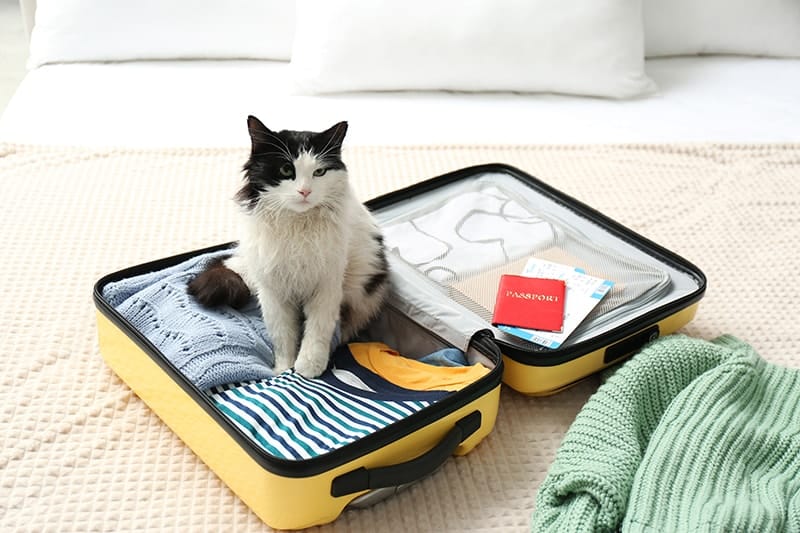
While there aren’t immediate dangers to your cat being trapped in your luggage, it is still a serious concern. If the luggage is packed tight, your cat could suffocate. When traveling, your cat may become hurt if your luggage is banged around. Before zipping up your suitcases and bags, look through your things to ensure your cat isn’t hiding among them.
6. Dresser Drawers
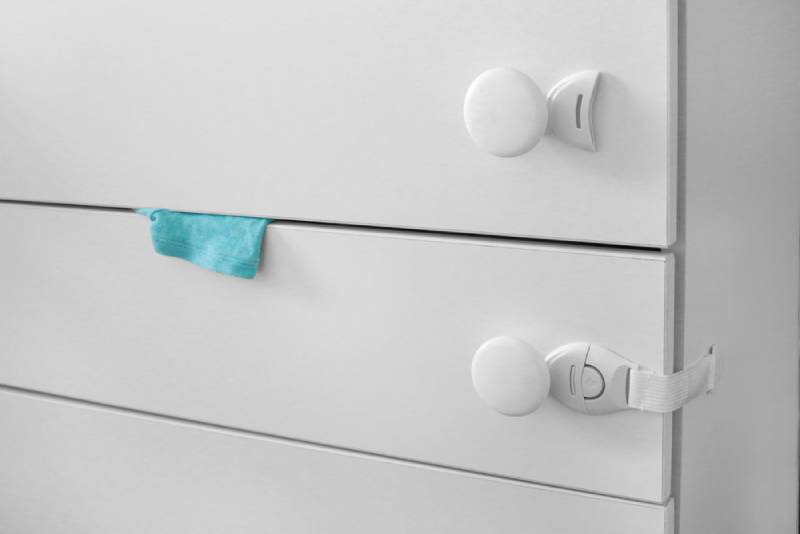
There are plenty of cat videos where crafty cats get into a dresser drawer they like. While this is cute and fun, it can also be dangerous if the cat becomes trapped.
If you know your cat has a favorite dresser drawer, it is best to leave it slightly open at all times. Or, if you would rather that they stay out of it, you may need to cat-proof it. Either way, ensuring your cat is not shut inside is vital for their safety.
7. Cabinets
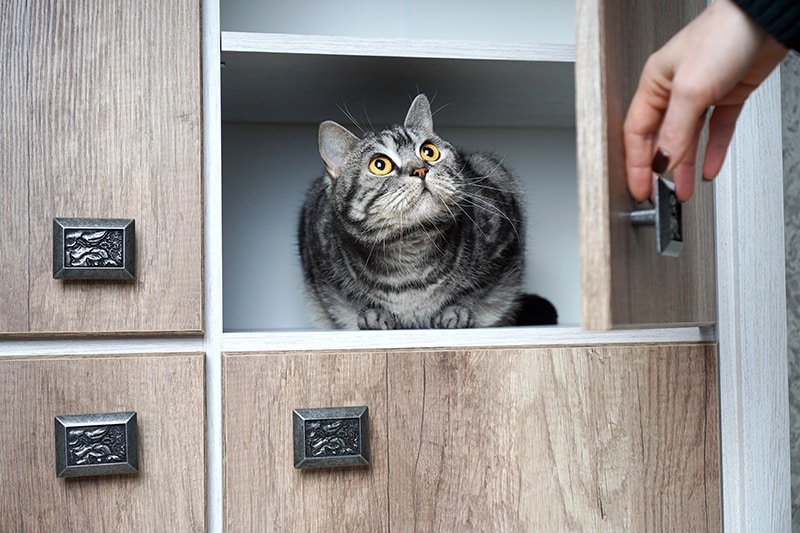
Like dresser drawers, cabinets are another popular hiding spot for cats. They’re also relatively easy for cats to figure out, and you can never assume that your cat isn’t trapped inside a cabinet.
Keeping cabinets closed may dissuade your cat from entering them, but it doesn’t guarantee that they’ll stay out. Keeping all your cabinets open to ensure your cat doesn’t get trapped isn’t a pragmatic decision for most households, so cat-proofing them is the best option.
8. Balconies

If you have a balcony attached to your home, check the space before leaving it to ensure you aren’t leaving your cat behind. Balconies are attractive areas for cats, as they are safe, enclosed spaces where the sunshine reaches. While there likely isn’t an immediate risk to your cat’s safety if they are trapped on a balcony, it can become dangerous over time.
Poor weather conditions, extreme temperatures, and wild animals can threaten your cat’s well-being if they’re trapped on a balcony. To escape, your cat may even try to jump off the balcony, which can harm them if they fall from a great height.
9. Rafters
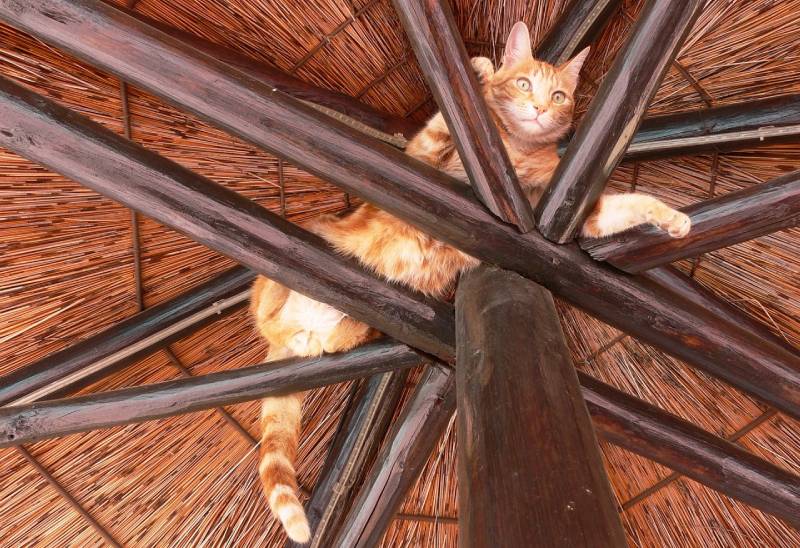
If your indoor cat has access to rafters, whether due to the design of your home or due to easy access to the garage, they can become trapped. Cats are confident in their abilities and too curious to avoid an adventure. However, sometimes cats bite off more than they can chew, and they have a hard time getting down.
Just because your cat got up there on their own doesn’t mean they can get back down. If you leave them up there too long, they may become injured from a jump or a fall.
10. Garage

While most garages are shielded from the elements, they aren’t typically protected from extreme temperatures. They may also be home to rodents carrying parasites or diseases that can harm your cat. Several hazardous chemicals, such as weed killers or insecticides, are also stored in garages. Whenever you enter or exit the garage, check to ensure your cat doesn’t slip through the door.
11. Box Springs
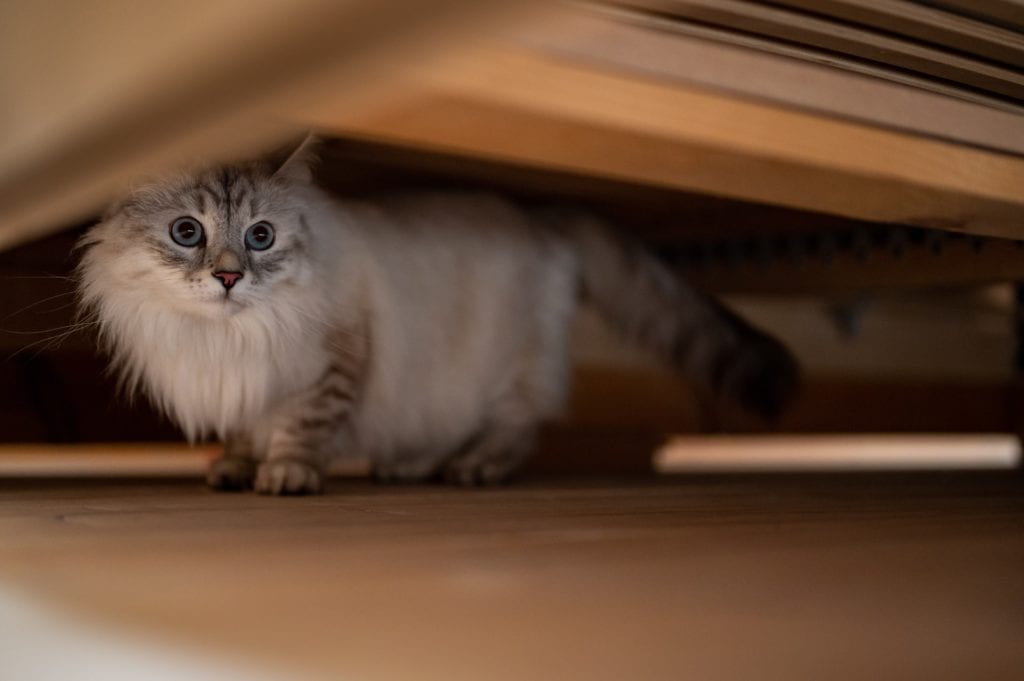
The box spring beneath your bed is another place cats may become stuck. The underside of your bed is appealing to cats, as it is dark, quiet, and private. If your cat travels up into the box springs, they can get tangled in the bars or wires.
Preventing your cat from getting inside the box spring is harder than keeping them from the other places on this list. There isn’t a door to the underside of your bed that you can shut, after all. While you can try to block the area off, a determined kitty may still be able to access it. Your best option may be to keep your bedroom door shut so your cat can’t access your bed.
How Do Cats Get Stuck in Walls?
It’s terrifying, but it’s true: cats have been known to get stuck in walls. But how? Well, one cat owner discovered her cat had seemingly vanished from the house during home renovations. Then, she heard meowing. Sure enough, the sound was coming from inside of her bathroom wall.
During renovations, the cat slipped into the bathroom and wandered into an unfinished hole in the wall. The workers didn’t notice and continued to close off the wall, and the cat was trapped.
Thankfully, the owner was able to remove her cat from the wall. They went to the vet, received treatment, and the cat recovered. Still, the experience was scary and not something someone would want to repeat.
If there are accessible openings in the walls of your home, your cat may be able to find them and get trapped inside. Search your home for these spots and do your best to block them off after confirming that your cat isn’t inside, of course.
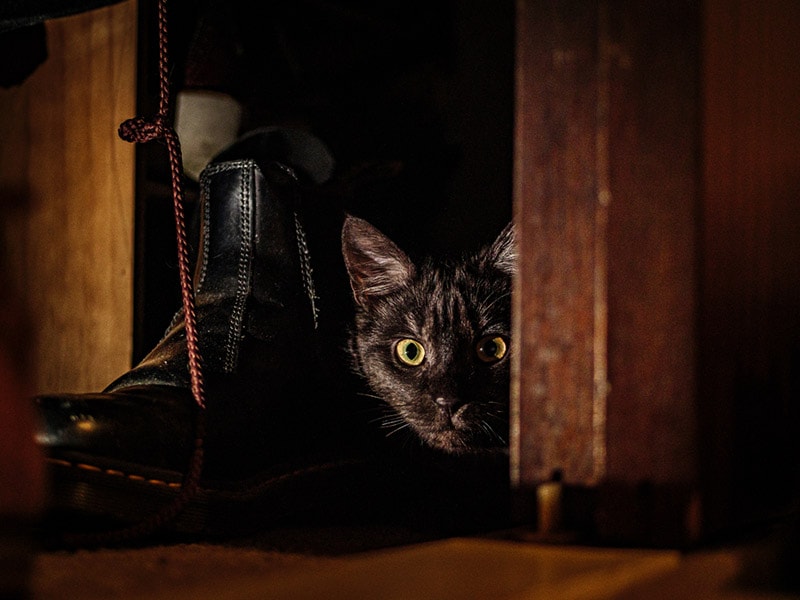
Why Do Cats Hide?
Hiding is a normal cat behavior. Cats enjoy having their own private space, and they like to seek out hiding spots. If your cat hides occasionally, that’s fine. However, there are times when a cat’s hiding behavior is concerning.
Frequent hiding, especially in a cat that is normally sociable, may indicate a health issue or a behavioral problem. If your cat suddenly begins hiding more frequently, you should watch for other signs that your cat is unwell or things that might be causing them stress. Monitor their eating, drinking, urinating, and defecating habits. If anything appears different, call your vet and have your cat checked out.
Conclusion
There are plenty of places where an indoor cat can get stuck. While not all of them are immediately dangerous, they can become a risk to your cat’s safety the longer they are trapped. Therefore, it is a good idea for cat owners to identify these areas in their homes and prevent their cats from accessing them. If your cat wants places to hide, you can provide safe hiding spots with cat caves, tunnels, and more.
Featured Image Credit: Chendongshan, Shutterstock

